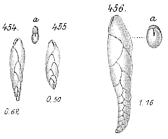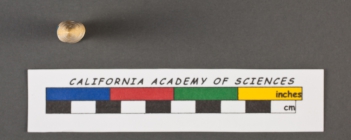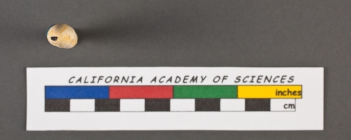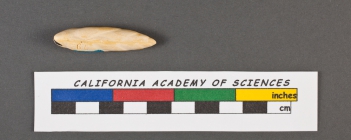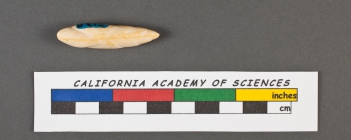Deep-Sea taxon details
Fursenkoina Loeblich & Tappan, 1961
112111 (urn:lsid:marinespecies.org:taxname:112111)
accepted
Genus
Cassidella Hofker, 1953 · unaccepted (Opinion of Revets, 1996: Opinion...)
Opinion of Revets, 1996: Opinion ICZN 1834
Virgulina d'Orbigny, 1826 · unaccepted (homonym)
- Species Fursenkoina bradyi (Cushman, 1922)
- Species Fursenkoina bramlettei (Galloway & Morrey, 1929)
- Species Fursenkoina complanata (Egger, 1893)
- Species Fursenkoina compressa (Bailey, 1851)
- Species Fursenkoina earlandi (Cushman, 1936)
- Species Fursenkoina pauciloculata (Brady, 1884)
- Species Fursenkoina pontoni (Cushman, 1932)
- Species Fursenkoina punctata (d'Orbigny, 1839)
- Species Fursenkoina schreibersiana (Cžjžek, 1848)
- Species Fursenkoina seminuda (Natland, 1938)
- Species Fursenkoina subacuta (d'Orbigny, 1852)
- Species Fursenkoina tessellata (Phleger & Parker, 1951)
- Species Fursenkoina acuta (d'Orbigny, 1846) accepted as Fursenkoina subacuta (d'Orbigny, 1852) (unaccepted > junior homonym, Nomen novum in d'Orbigny (1852) Junior homonym of P. acuta Römer, 1838 [F. schreibersiana is an adult form of F. acuta in Opinion of Papp and Schmid (1985)])
- Species Fursenkoina fusiformis (Williamson, 1858) accepted as Stainforthia fusiformis (Williamson, 1858)
- Species Fursenkoina loeblichi (Feyling-Hanssen, 1954) accepted as Stainforthia loeblichi (Feyling-Hanssen, 1954) (superseded combination)
- Species Fursenkoina mexicana (Cushman, 1922) accepted as Rutherfordoides mexicana (Cushman, 1922) accepted as Rutherfordoides mexicanus (Cushman, 1922) (Opinion of Loeblich and Tappan (1987))
- Species Fursenkoina rotundata (Parr, 1950) accepted as Rutherfordoides rotundata (Parr, 1950) accepted as Rutherfordoides rotundatus (Parr, 1950)
marine, brackish, fresh, terrestrial
recent + fossil
feminine
Loeblich, A. R.; Tappan, H. (1961). Suprageneric classification of the Rhizopodea. <em>Journal of Paleontology.</em> 35: 245-330.
page(s): p. 314 [details] Available for editors
page(s): p. 314 [details] Available for editors
Hayward, B.W.; Le Coze, F.; Vachard, D.; Gross, O. (2024). World Foraminifera Database. Fursenkoina Loeblich & Tappan, 1961. Accessed through: Glover, A.G.; Higgs, N.; Horton, T. (2024) World Register of Deep-Sea species (WoRDSS) at: https://www.marinespecies.org/DeepSea/aphia.php?p=taxdetails&id=112111 on 2024-04-23
Glover, A.G.; Higgs, N.; Horton, T. (2024). World Register of Deep-Sea species (WoRDSS). Fursenkoina Loeblich & Tappan, 1961. Accessed at: https://marinespecies.org/deepsea/aphia.php?p=taxdetails&id=112111 on 2024-04-23
Date
action
by
2006-09-12 06:54:36Z
changed
Martinez, Olga
original description
Loeblich, A. R.; Tappan, H. (1961). Suprageneric classification of the Rhizopodea. <em>Journal of Paleontology.</em> 35: 245-330.
page(s): p. 314 [details] Available for editors
original description (of Virgulina d'Orbigny, 1826) Orbigny, A. D. d'. (1826). Tableau méthodique de la classe des Céphalopodes. <em>Annales des Sciences Naturelles.</em> vol. 7: 96-169, 245-314., available online at http://biodiversitylibrary.org/page/5753959
page(s): p. 267 [details]
original description (of Cassidella Hofker, 1953) Hofker, J. (1953). Types of Genera Described in Part III of the "Siboga Foraminifera". <em>The Micropaleontologist.</em> 7(1): 26-28., available online at https://doi.org/10.2307/1483812
page(s): p. 26 [details] Available for editors
basis of record Gross, O. (2001). Foraminifera, <B><I>in</I></B>: Costello, M.J. <i>et al.</i> (Ed.) (2001). <i>European register of marine species: a check-list of the marine species in Europe and a bibliography of guides to their identification. Collection Patrimoines Naturels,</i> 50: pp. 60-75 (look up in IMIS) [details]
additional source Neave, Sheffield Airey. (1939-1996). Nomenclator Zoologicus vol. 1-10 Online. <em>[Online Nomenclator Zoologicus at Checklistbank. Ubio link has gone].</em> , available online at https://www.checklistbank.org/dataset/126539/about [details]
additional source Asioli, A. (1995). Living (stained) benthic Foraminifera distribution in the western Ross Sea (Antarctica). <em>Paleopelagos.</em> 5: 201-214. [details]
additional source Loeblich, A. R.; Tappan, H. (1987). Foraminiferal Genera and their Classification. Van Nostrand Reinhold Company, New York. 970pp., available online at https://books.google.pt/books?id=n_BqCQAAQBAJ [details] Available for editors
additional source Revets, S. A. (1996). The generic revision of five families of Rotaliine Foraminifera - Part 1. The Bolivinitidae Cushman, 1927. <em>Cushman Foundation for Foraminiferal Research, Special Publication.</em> 1-55., available online at https://cushmanfoundation.allenpress.com/Portals/_default/SpecialPublications/sp34.pdf [details] Available for editors
page(s): p. 314 [details] Available for editors
original description (of Virgulina d'Orbigny, 1826) Orbigny, A. D. d'. (1826). Tableau méthodique de la classe des Céphalopodes. <em>Annales des Sciences Naturelles.</em> vol. 7: 96-169, 245-314., available online at http://biodiversitylibrary.org/page/5753959
page(s): p. 267 [details]
original description (of Cassidella Hofker, 1953) Hofker, J. (1953). Types of Genera Described in Part III of the "Siboga Foraminifera". <em>The Micropaleontologist.</em> 7(1): 26-28., available online at https://doi.org/10.2307/1483812
page(s): p. 26 [details] Available for editors
basis of record Gross, O. (2001). Foraminifera, <B><I>in</I></B>: Costello, M.J. <i>et al.</i> (Ed.) (2001). <i>European register of marine species: a check-list of the marine species in Europe and a bibliography of guides to their identification. Collection Patrimoines Naturels,</i> 50: pp. 60-75 (look up in IMIS) [details]
additional source Neave, Sheffield Airey. (1939-1996). Nomenclator Zoologicus vol. 1-10 Online. <em>[Online Nomenclator Zoologicus at Checklistbank. Ubio link has gone].</em> , available online at https://www.checklistbank.org/dataset/126539/about [details]
additional source Asioli, A. (1995). Living (stained) benthic Foraminifera distribution in the western Ross Sea (Antarctica). <em>Paleopelagos.</em> 5: 201-214. [details]
additional source Loeblich, A. R.; Tappan, H. (1987). Foraminiferal Genera and their Classification. Van Nostrand Reinhold Company, New York. 970pp., available online at https://books.google.pt/books?id=n_BqCQAAQBAJ [details] Available for editors
additional source Revets, S. A. (1996). The generic revision of five families of Rotaliine Foraminifera - Part 1. The Bolivinitidae Cushman, 1927. <em>Cushman Foundation for Foraminiferal Research, Special Publication.</em> 1-55., available online at https://cushmanfoundation.allenpress.com/Portals/_default/SpecialPublications/sp34.pdf [details] Available for editors
 Present
Present  Inaccurate
Inaccurate  Introduced: alien
Introduced: alien  Containing type locality
Containing type locality
From editor or global species database
Diagnosis Test narrow, elongate, rounded to ovate in section, chambers high and narrow, slightly inflated, biserial throughout, although plane of biseriality twists about the test axis, sutures oblique, depressed; wall calcareous, hyaline, optically granular, very finely perforate, surface smooth; aperture narrow, elongate, extending up the face of the final chamber, lower part of the opening may be closed in the adult, leaving only a suture to the base of the chamber and the remaining areal opening comma shaped, toothplate attached to the closed apertural suture, the free folded part projecting through the opening as a denticulate tooth, and the opposite end attached within to the previous apertural foramen. U. Cretaceous to Holocene; cosmopolitan. (Loeblich & Tappan, 1987, Foraminiferal Genera and Their Classification) [details]


